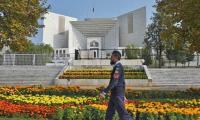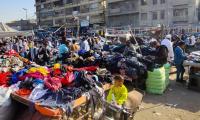ISLAMABAD: At least 91 cases, including seven murders of journalists and a blogger, attacks and other violations, against media and its practitioners have been documented in Pakistan over the course of one year – between May 2019 and April 2020 – signifying a worryingly escalating climate of intimidation and harassment that is adversely affecting the freedom of expression and access to information environment in the country, says a press release issued here on Thursday.
This is revealed in the Pakistan Press Freedom Report 2019-20, titled “Murders, Harassment and Assault: The Tough Wages of Journalism in Pakistan,” produced by Freedom Network, a Pakistani media rights watchdog, and issued to mark World Press Freedom Day 2020 on May 3.
“The screws on media in Pakistan are being tightened through various means of censorship, including murders, threats, and harassment, resulting in increasing silence and resulting in erosion of public-interest journalism,” Iqbal Khattak, the Executive Director of Freedom Network, said.
“The data shows that no place in the four Pakistani provinces or Islamabad is safe – attacks against journalists are taking place everywhere and that shockingly the state and its functionaries have emerged as the principal threat actor wielding the biggest stick to browbeat the media into submission and growing silence,” he added.
The following are key findings of the Freedom Network annual report:
Scale of violations against media in Pakistan and their frequency: At least 91 cases of attacks and violations against journalists and media practitioners were documented in Pakistan in the one year between May 3, 2019 and April 10, 2020 across all territories of Pakistan, including the four provinces and Islamabad. This is an average of over seven cases of violations a month – one every fourth day, or twice a week. The violations included killing of seven journalists for their journalism work, two cases of abductions, nine cases of arrests, detentions or confinements, 10 cases of physical assaults, half of which caused severe bodily injuries, one case of attack on the home of a journalist, 23 cases of specific written or verbal threats, 10 cases of censorship, and eight instances of legal cases registered against journalists.
The top three categories of violations against the journalists in Pakistan in the period under review included 23 cases of verbal or written threats of murder or other dire consequences (25%), at least 13 cases of offline and online harassment (14%), and 11 cases of assassination attempts (12%) of which seven resulted in killing of journalists.
The most dangerous region in Pakistan for journalists: Overall Islamabad emerged as the riskiest and most dangerous place to practice journalism in Pakistan with 34% of the violations (31 out of total 91 cases) recorded in the federal capital. Sindh was the second worst with 27% of the violations (24 cases) followed closely by Punjab with 22% (20 cases), Khyber Pakhtunkhwa with 14% (13 cases) and Balochistan with 3% (3 cases).
The most targeted medium in Pakistan: Of the total of 91 attacks and violations against journalists recorded in Pakistan, TV medium emerged as the single largest victim of type of media with at least 63 cases (69%) of the cases against its practitioners compared to print, radio and internet. Print media was the second most targeted medium with 25 journalists working for it targeted (28%) while three cases were recorded of online journalists targeted. No targeting of a radio journalist was documented.
The most serious threat actors targeting media in Pakistan: In a whopping 42% of the 91 documented cases of violations against media practitioners in Pakistan, the victims or their families suspect the involvement of the government functionaries in the attacks on them compared to other influential threat actors such as political parties, religious groups or criminal gangs and influential individuals, or unidentified threat sources.
Chairman Senator Farooq Hamid Naek presided over committee at Parliament House on Wednesday
Spox says govt has played a mediatory role in this agreement, and process of disarmament is in progress
UN's role is to support govts and societies but world has become very complex and there is no easy solution, says Afke...
Meeting highlights ongoing efforts to enhance diplomatic relations between Pakistan and UAE
Minister says task force is finalising recommendations, report will be submitted to PM in next two weeks
Sindh CM and governor accompanied prime minister to residence of Sharjeel Memon







